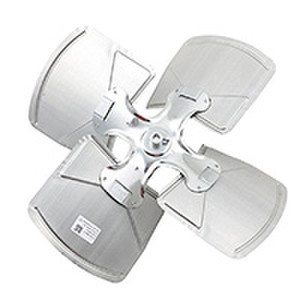In today's world, where comfort is a top priority, air conditioners have become indispensable in our lives. However, like any other mechanical device, air conditioners may need maintenance or repairs at some point. When that time comes, it's crucial to know about OEM (Original Equipment Manufacturer) air conditioner parts. In this comprehensive guide, we will delve into the world of OEM air conditioner parts, their importance, and how to choose the right ones for your needs.
Understanding OEM Air Conditioner Parts
What Are OEM Air Conditioner Parts?
OEM air conditioner parts are components and replacement parts that are specifically designed and manufactured by the same company that produced your air conditioning unit. These parts are identical to the original components in your AC system, ensuring compatibility and optimal performance.
The Significance of OEM Parts
Using OEM air conditioner parts offers several advantages:
- Quality Assurance
OEM parts are manufactured to the highest quality standards, ensuring longevity and reliability. When you choose OEM, you can trust that the parts will function seamlessly with your AC unit.
- Compatibility
OEM parts are designed to fit perfectly with your specific air conditioner model. This eliminates compatibility issues and ensures a hassle-free installation process.
- Warranty Protection
Many AC manufacturers offer warranties that cover OEM parts. Using non-OEM parts may void your warranty, potentially costing you more in the long run.
The Process of Choosing OEM Air Conditioner Parts
Identifying Your AC Model
Before purchasing OEM parts, you need to identify your air conditioner's model and serial number. This information can typically be found on a label located on the unit. Knowing your AC model is essential for selecting the right parts.
Locating a Reliable Supplier
Once you have your AC's details, it's time to find a reputable supplier of OEM air conditioner parts. Look for suppliers with a history of providing genuine parts and positive customer feedback.
Verifying Authenticity
To ensure you are purchasing authentic OEM parts, verify the supplier's credentials and ask for certification or proof of authenticity. This step is crucial in avoiding counterfeit parts.
Comparing Prices
While OEM parts are known for their quality, it's still a good practice to compare prices from different suppliers. Be wary of significantly lower prices, as they may indicate non-genuine parts.
Installing OEM Air Conditioner Parts
DIY vs. Professional Installation
Depending on your expertise and the complexity of the replacement, you can choose between DIY installation or hiring a professional technician. Keep in mind that improper installation can lead to further issues.
Safety Precautions
Whether you opt for DIY or professional installation, always follow safety precautions. Turn off the power supply and follow manufacturer instructions for a secure and accident-free installation.
Maintenance Tips for Your AC
Regular Cleaning
To extend the lifespan of your air conditioner and its parts, perform regular cleaning. Remove dust and debris from filters, coils, and vents to maintain optimal performance.
Professional Servicing
Consider scheduling annual professional servicing to detect and address potential issues before they become major problems.
Conclusion
OEM air conditioner parts are the lifeline of your cooling system, ensuring efficient operation and longevity. By choosing genuine OEM parts, identifying your AC model, and following proper installation and maintenance procedures, you can enjoy a comfortable indoor environment for years to come.
FAQs (Frequently Asked Questions)
- Are OEM air conditioner parts more expensive than generic alternatives?
While OEM parts may have a slightly higher upfront cost, they offer better quality and reliability, making them a cost-effective choice in the long run.
- Can I replace OEM parts with non-OEM parts?
While it's technically possible, using non-OEM parts may void your warranty and lead to compatibility issues. It's recommended to stick with OEM parts for the best results.
- How often should I clean my air conditioner's filters?
It's advisable to clean or replace your air conditioner's filters every 1 to 3 months, depending on usage and environmental conditions.
- What should I do if I can't find OEM parts for my older AC model?
If OEM parts for older models are scarce, consult with a professional HVAC technician who may suggest suitable alternatives or compatible parts.
- Is professional installation necessary for all OEM part replacements?
Not necessarily. Some replacements, like changing a filter, can be done by homeowners. However, for more complex replacements or repairs, it's recommended to hire a qualified technician to ensure safety and efficiency.
In this guide, we've covered everything you need to know about OEM air conditioner parts, from their significance to the selection process. By following these guidelines, you can keep your air conditioner running smoothly and enjoy a cool and comfortable living space.


No comments yet